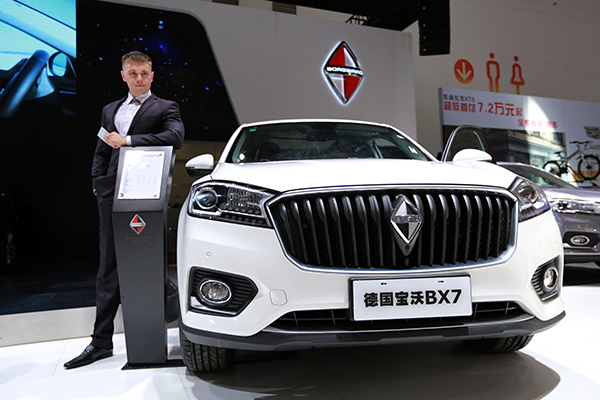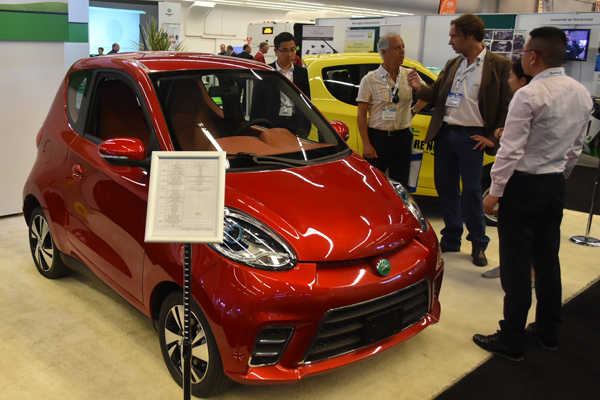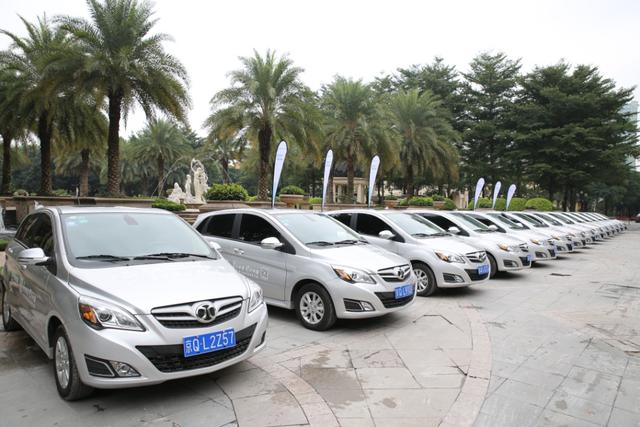The Electric Car Market Has A 'Chicken Or Egg' Problem -- And China Is Solving It
Jack Perkowski ,
CONTRIBUTOR
SEP 26, 2016 @ 10:45 AM
A man at an electric vehicle at a charging point in Linan, east China’s Zhejiang province in March 2016. (STR/AFP/Getty Images)
Electric Vehicle (EV) makers across the world face a classic “chicken or egg” problem.
Concerned with the range of EVs and the availability of charging stations, consumers are reluctant to forsake their traditional internal combustion engine-powered cars in favor of those powered by batteries. Yet, building a charging infrastructure is expensive, and investors are understandably reluctant to commit capital until there is a market. So what will come first: the cars or the charging stations?
A variety of forces are now converging in China, which are enabling the country to break this deadlock. Dense urban populations, a love affair with the automobile, worsening air pollution and the country’s shortage of energy resources have encouraged the government to promote the development and sales of new energy vehicles (NEVs), generally considered to be hybrid electric vehicles and pure EVs.
Opening up to private capital
In addition to providing a wide range of tax and financial incentives for the industry, China has increased emphasis on research development; exempted NEV buyers from license plate restrictions; and opened up its power sector, traditionally an industry reserved for state-owned companies, to private capital. In May 2014, China began
allowing private companies to invest in electric charging and replacement stations when China’s State Grid announced that it would support the development of privately-owned distributed energy resources.
These measures appear to be producing results. Sales of EVs and plug-in hybrids increased fourfold to more than 330,000 units in 2015 and have increased a further 162% so far this year.
Also, capital has been pouring into the industry to create the all-important charging infrastructure. At the end of June, there were
approximately 81,000 public charging stations in China, up 65% compared to the end of 2015. During the same period, the number of private charging stations rose 12% to more than 50,000, according to the National Energy Administration.
Investments in charging stations
Private entrepreneurs, large Chinese car companies, private equity funds and companies with excess cash are all looking to get involved. Investments are being made in companies that manufacture charging systems; companies that construct and operate charging stations; and companies that provide a wide range of ancillary services to EV customers.
In July 2014,
TGOOD Global Ltd., a Hong Kong-based global leader in prefabricated E-Houses and electrical substations, funded a separate charging subsidiary, which is believed to be the first substantial investment in the industry by a private company. TGOOD has more than 30 patents in EV charging station technology, and in 2015, the company successfully completed an electric taxi charging depot in Qingdao. Additional city-wide projects are slated for construction in Beijing, Tianjin, Hefei and Huizhou.
In September, 2015, Beijing Dianzhuang Technology Co, a start-up that builds and rents charging posts, said it received “tens of millions of yuan” from LeEco, a Chinese internet entertainment giant that is often referred to as the “Netflix of China.” Leveraging its internet content, capability and subscriber base, LeEco itself has begun to design and produce connected EVs and understands the importance of the charging infrastructure to the industry’s development.
Jia Yueting, LeEco’s founder and chief executive, said that building a charging infrastructure is the biggest obstacle for the new-energy auto market in China, and that selling electric cars before building charging posts “won’t work.”
In October, 2015, SAIC
said it has invested RMB 300 million ($45 million) to set up a charging subsidiary, whose services will include the construction of charging systems and terminal networks and other services for NEVs in Shanghai’s Huangpu District. SAIC’s new subsidiary plans to build 50,000 public charging piles in China by 2020.
Finally, in February of this year, Chargerlink, a Shenzhen-based start-up focused on providing charging station solutions for EV manufacturers such as Tesla, BMW, Nissan and BYD,
raised $20 million from a group of venture capital firms. Chargerlink plans to expand its product line to include location based services at charging stations.
China is now the undisputed global leader in NEVs
Going forward, China’s goal is to have 4.8 million charging stations in operation by 2020, capable of meeting the charging needs of 5 million EVs. Almost one-half of the charging stations will be located in three smog-affected regions of China—the Beijing-Tianjin-Hebei Area, the Pearl River Delta and the Yangtze River Delta. In addition to the Central Government’s initiatives, municipalities such as Beijing, Shenzhen, Hangzhou and Guangzhou have formulated their own plans for EV and charging station popularization.
After an initial round of industry hype nearly ten years ago, punctuated by legendary investor Warren Buffet’s decision to buy 10% of BYD for $230 million, China’s EV industry fizzled and went to sleep. Manufacturers and consumers alike lost interest, largely because the development of an adequate charging infrastructure seemed a long way off.
This time around, the trend is on more solid footing with both favorable government policies and strong capital support from the private sector. China is now the undisputed global leader in NEVs, a title it is likely to hold for a long time to come.
http://www.forbes.com/sites/jackper...a-electric-car-charging-station/#60c786d73221






















